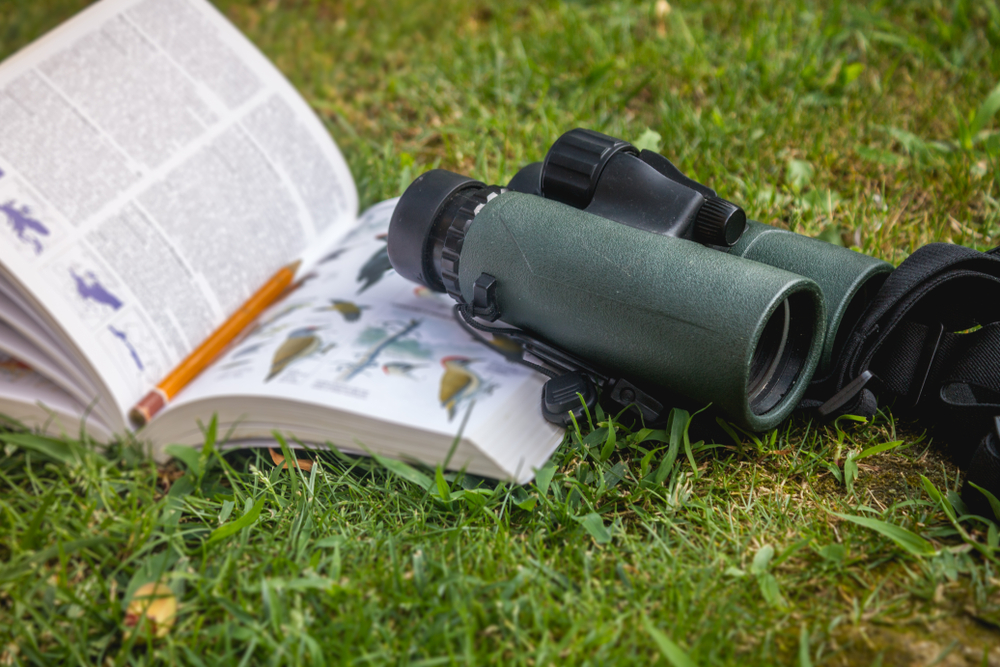Major brands and young, globally minded designers alike are asking the question: How do you come up with a garment that is sustainable, that can stand on its own and not rob from the future? Here are six trends that eco-designers are currently following.
Carmel Wroth | June/July 2009 issue

Designer Natalie Chanin remembers the exact moment her fashion paradigm shifted. “I was standing on a street corner in the [New York City] Garment District holding this old T-shirt that I had ripped apart and sewn back together myself,” she says. A 20-year veteran of fashion and costume design, she’d spent the day meeting with manufacturers, asking them to do a hand-sewn line of her reconstituted T-shirts. People kept giving her “a cockeyed look, like I was from outer space,” she recalls. Standing at the corner of 37th and 8th after one meeting, Chanin realized she was finished with New York and with the industry status quo of fast and cheap production. “I looked at the stitching I was using and it looked like quilting stitches. That’s when I realized I should go back home.”
Chanin’s hometown is Florence, Alabama, once known as the T-shirt capital of the world for all the cotton milling, weaving and T-shirt production that went on there. When she returned in 2000 after her epiphany at 37th and 8th, the town was still adjusting to the sudden loss of 5,000 textile jobs as a result of the passage of the North American Free Trade Agreement in 1993. Seeing the vacuum left behind in her community, Chanin questioned a business model that treats people like commodities, as disposable as the cheap garments it produces. Soon she started her own company, called Alabama Chanin, which operates on a more sustainable model, employing local sewers, creating hand-finished garments built to last, and striving to run a zero-waste operation by “upcycling” (i.e., re-using) production leftovers.
Chanin isn’t alone in her ambition to radically rethink fashion. Since the early 2000s, a growing number of designers and apparel companies have embraced ethical alternatives to the industry’s resource-intensive and wasteful practices. And it’s not just diehard Al Gore fans making hemp yoga clothes. Fashion shows in major cities have started to include sustainable designs from major labels, and hundreds of new eco-fashion companies have come onto the scene. The last time eco was this chic, back in the early 1990s, the focus was on materials, like unbleached organic cotton. Today’s ethical trends reflect a deeper commitment to make the entire production process more sustainable.
In the early 1990s, the first eco-fashion line from a major label was Esprit’s Ecollection, designed by Lynda Grose, who today teaches sustainable design at the California College of the Arts. At the time, Grose says, it was hard to get management even to understand the value of organic cotton; today, many big-league retail brands not only offer organic cotton lines but have taken giant steps to address labor issues, pollution, recycling and sourcing of raw materials. “This is a long-term trend that will continue to grow,” says Grose, citing the collaboration of clothing companies Gap and H&M with the Cleaner Cotton Initiative; the improved labor standards of Levi Strauss & Co. and Nike; and the investment of upmarket U.K. department store Marks & Spencer in fair trade.
In 2005, Nike started assessing all design decisions through the lens of sustainability in a program called Considered Design. The goal: to reduce waste and increase the use of environmentally safe materials by 2020. The firm gives designers instant reporting on the environmental cost of their decisions so they can find cleaner ways of doing things right from the drawing board. “Nike is trying to move as quickly as we can to reduce our environmental impact, and the best way to do that is to include the designers in the process,” says Lorrie Vogel, general manager of Considered Design. “They’re our visionaries.”
Despite progress like this, industry leaders are well aware that there’s still more to do. “When you start accounting for the full cost of production,” says Jill Dumain, outdoor apparel company Patagonia’s director of environmental analysis, “the question becomes, How do you really come up with something that is sustainable, that can stand on its own and is not robbing from the future?”
Luckily, major established brands and young, globally minded designers alike are coming up with answers to exactly that question. Here’s a look at six trends that are bursting the seams of fashion’s old business model and creating a more sustainable future.
1) Know your supplier

Any idea you might have that ethical fashion is for dour do-gooders disappear when you see the French-Brazilian company Veja’s line of 1970s-inspired sneakers. “The main reason ethical fashion wasn’t selling was it didn’t have a sexy image,” explains Elizabeth Laskar of the Ethical Fashion Forum, a network of designers and fashion industry leaders in London. Veja shoes are sexy and chic enough to be an impulse buy, but they’re also the product of a meticulously cultivated supply chain from farmer to seamstress to salesperson to consumer. “We wanted to start from scratch,” says Sébastien Kopp, who co-founded the company with François-Ghislain Morillon in 2005.
When Kopp started looking for growers in Brazil who could consistently produce the materials he needed—organic cotton, wild-harvested rubber and vegetable-tanned leather—he found many farmers cultivating less than an acre of cotton and rubber harvesters who had no business know-how. Working with local non-governmental organizations (NGOs), he helped organize and train the farmers in the Ceará region, developing the market for cotton. “It’s a global fight to work with very small producers,” he says. “They’re far away from communication links and roads. You have to know them, know their challenges and know the paradoxes in the field. But it has a long-term benefit for everybody.” Kopp is convinced that relationship-based supply chains are scalable; his company is growing fast, without advertising, and demand is strong on five continents. “If two crazy French guys did it, it’s possible,” he quips.
2) Just say no to waste

When he founded Rickshaw Bagworks, Mark Dwight was frustrated with the wasteful cycle of seasonal forecasting and overproduction common in the accessories industry. “I started looking just at the engineering part of this problem,” he says. “How do I get rid of waste in manufacturing?” His answer: a modular design concept featuring a classic bag interior and trend-driven fabrics on the exterior flaps. Since the interior remains the same, and can be updated with seasonal fabric styles, Dwight doesn’t stockpile unsold finished goods that need to be dumped at season’s end. He has also created the Zero Bag, made from a single piece of nylon, with not a scrap wasted. “Mother Nature has a certain healing capacity and we’ve exceeded that capacity, so now we’re starting to live in our own waste,” Dwight says. “As a species, we’re smart enough to solve just about any problem. Now is the time.”
3) Close the loop
When you wear out a Patagonia garment, you don’t have to feel guilty about disposing of it. Just take it to a Patagonia location and it’ll be recycled into something new. “When you look at this raw material, which is in essence the same raw material as the end product, reusing it makes sense,” says Patagonia’s Dumain. The company’s directors are working to make all products recyclable by 2010. The firm has already seen energy and carbon emissions reductions as a result. “The more we learn about how much energy it takes to grow, extract or mine raw material, the more we’re convinced that closed-loop cycles make sense,” says Dumain. Adds the California College of the Arts’ Grose: “The old model was linear; you make it, sell it and dispose of it. The new model is cyclical.”

4) Start upcycling
With millions of tons of perfectly usable clothes thrown away every year, designers have started tapping into this waste stream for raw material and inspiration. Britain’s Junky Styling and Canada’s Preloved brands have both made fresh “upcycled” designs constructed from clothes that would otherwise end up in the landfill. U.K.-based designer Mia Nisbet has gone a step further. In her fashion studies at the Glasgow School of Art, Nisbet discovered one of the disturbing side effects of fashion’s fast-consumption model is that old clothes get dumped on markets in Africa. “When these clothes are exported to African countries, it can be devastating to the fashion economy,” she says.
To turn this situation around, she started a business based in Malawi. She purchases castoff clothes from street markets and hires local tailors to construct her creative designs, which mix Western styles and locally produced traditional Malawian textiles. Her clothes, sold in boutiques in London and Los Angeles, bring lost fashion wages back to Malawi’s economy. Nisbet hopes her initiative will inspire consumers to look at their own closets differently. “The way the disposable fast fashion market is going these days, it’s important to take stock of what we’ve already got. People don’t realize what they’ve already got in their wardrobe may have the potential to be something different.”
5) Go global

It used to be that designers in Paris, New York and Milan would send out their concepts to be produced by cheap labor in the rest of the world. But fashion shows and shops increasingly showcase designers from developing economies like South Africa, Brazil and India. Tamsin Lejeune, director of London’s Ethical Fashion Forum, says this will support the evolution of an increasingly equitable marketplace. “For emerging economies, fashion is an inspirational way they can access more trade,” she says. “It’s a more sustainable model, which isn’t exclusively about businesses in the West sourcing [in the developing world.]”
Many of these designers are also attuned to environmental and social issues. Samant Chauhan, from Bihar, India, has created a widely acclaimed line of couture silk garments made entirely from silk harvested without killing the silkworm. Chauhan aims to preserve the age-old spinning and weaving techniques in his native village, Bhagalpur. “This was my hometown but I was not aware of this silk,” he says. “When I was in fashion school, I came to know this is something very unique.” Now he works with a local NGO to organize craftspeople to negotiate with buyers from the apparel and home décor industries.
6) Take it slow
Natalie Chanin may run Alabama Chanin from an abandoned T-shirt mill in her hometown of Florence, Alabama, but her business model is radically different from those mass production days. Chanin takes a “slow” approach to fashion. Slow design focuses on quality and on “an awareness of the materials and the people making them,” says Kate Fletcher, a U.K.-based fashion consultant, credited with applying the concept to fashion.
Chanin draws inspiration from the days of Alabama’s quilting bees, when women would gather to hand-stitch quilts, and from her grandparents, who lived simply and grew their own food. “It seemed to me my grandparents actually had it right,” Chanin says. “They lived with respect for everything around them.” Chanin’s garments are created with that same respect for quality and craftsmanship. They are handpainted and embroidered by local craftswomen. “How much better would it be,” she muses “if we only bought things that we love so much we never want them to leave our life?” Chanin also sells patterns and raw materials for those who want to try making their own.
Chanin’s company may be small but it’s leading a new trend, in which style is defined not only by the cut of the cloth, but by the integrity of the business model.
Carmel Wroth is a writer whose latest ambition is to learn to sew.











